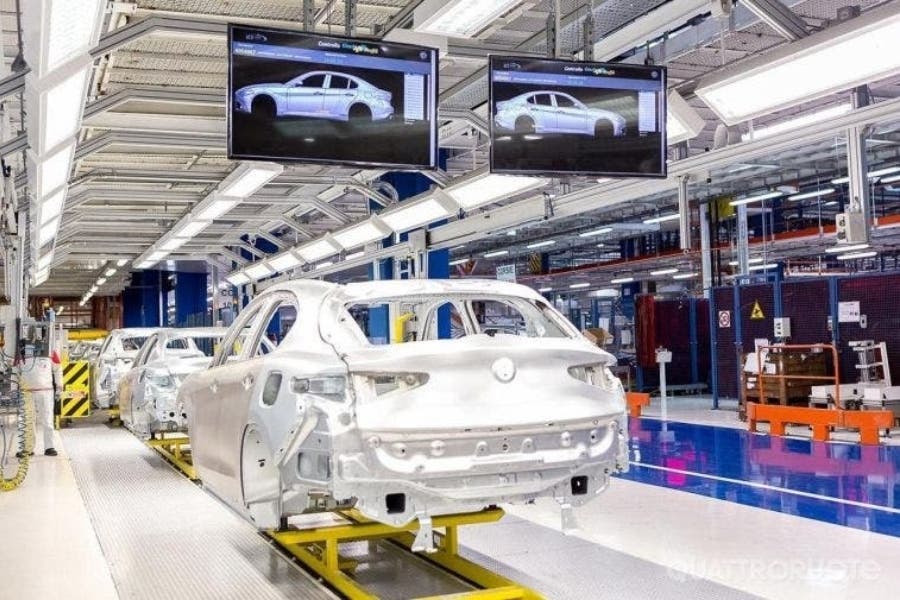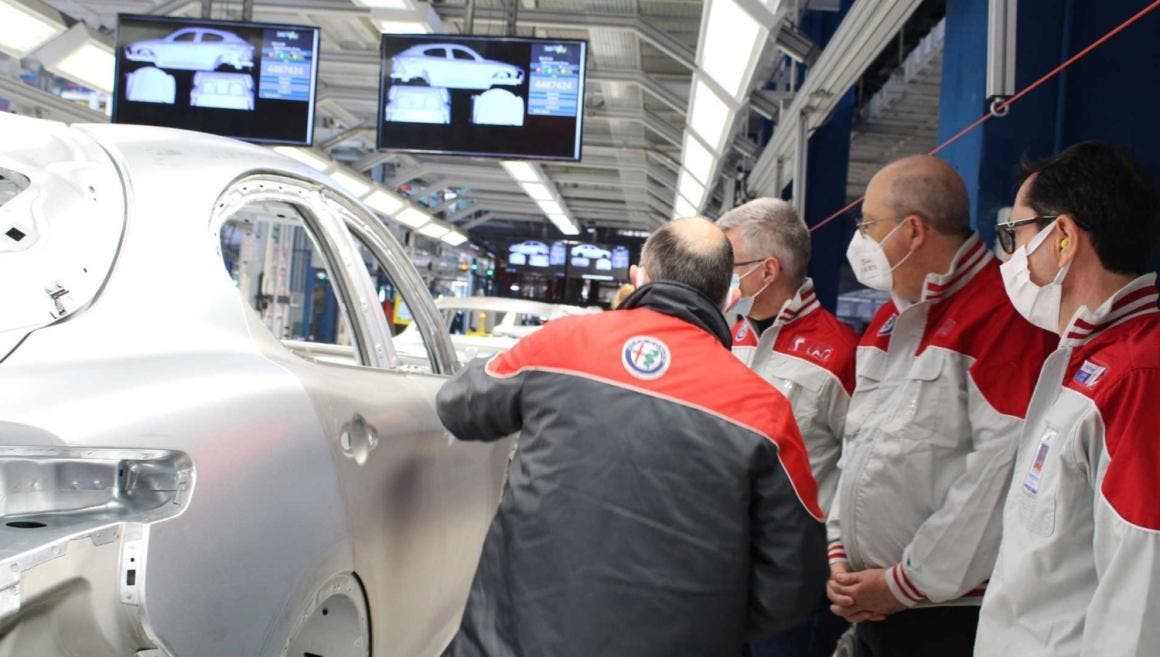Alfa Romeo: contrasts between Junior’s success and production slowdown
In the midst of an ambitious internal reorganization process, Alfa Romeo faces a 2025 marked by contrasting dynamics. On the one hand, the launch of the long-awaited Alfa Romeo Junior has been well received by enthusiasts and industry professionals. On the other hand, production figures at Italian plants reveal a downward trend. This discrepancy highlights how the renewal phase undertaken by Biscione is impacting, at least in the short term, domestic production capacity, underscoring the complexity of balancing range innovation with operational efficiency.
Going by the Italian production plants, the historic Cassino plant, crucial for the production of iconic cars such as the Alfa Romeo Giulia, the Stelvio and the Maserati Grecale, went through a period of significant production contraction in the first three months of this year. The mere 4,655 units assembled represents an all-time low, showing a marked drop of nearly 50 percent compared to the volumes recorded in the same period in 2024.

And the Pomigliano d’Arco plant, too, is experiencing a significant drop in production. The latter is the production site for the Alfa Romeo Tonale and its U.S. counterpart, the Dodge Hornet. In the first three months of the year, only 5,016 units came off the assembly lines, marking a 30 percent decrease from the same period in 2024.
A potential game changer could be the restyling of the Tonale, scheduled for mid-year. However, the wait for this update is already having a negative impact, translating into a slowdown in current orders.
Looking in detail at production by model in the Cassino plant, it emerges that the Alfa Romeo Stelvio SUV is confirmed as the leading model, making up 53 percent of the total vehicles coming off the assembly lines. It is followed by the Alfa Romeo Giulia sedan, with a 26 percent share, and the Maserati Grecale SUV, which stands at 20 percent.
However, this marked decrease should not be interpreted as a sudden collapse, but rather as a reflection of a strategic transition phase. Both Alfa Romeo models, Giulia and Stelvio, are in the final phase of their commercial life cycle. Currently, their availability is limited to orders and restricted to diesel engines for the European market.

New model introduction strategy
This production scenario clearly highlights the group’s strategy of preparing the ground for the introduction of new models that will pick up the legacy of the Giulia and Stelvio. The current focus on Grecale production suggests a potential key role for this model in the short term, pending future launches.

The reduction in Giulia and Stelvio production, while a negative figure in the short term, is a tangible sign of the renewal of the range and adaptation to changes in the automotive market, which is increasingly oriented toward new engines and segments.
Alfa Romeo: production figure in the first three months of 2025
The overall Alfa Romeo production figure in Italy in the first three months of 2025 sends out a warning signal: fewer than 9,000 cars produced. Should this downward trend persist without a decisive turnaround, the brand’s annual production is likely to fall below the 35,000-unit threshold, a figure significantly far from the brand’s ambitious expectations.
So, hopes for a revival are now focused on the new generation of the Stelvio, scheduled to debut in early 2026. This unreleased SUV will rest on the Stellantis Group’s STLA Large platform and promises benchmark performance, with 100% electric versions capable of a range of up to 800 km. Later, the range will be expanded with hybrid variants.
The design of the new Stelvio, inspired by the iconic Alfa Romeo 33 Stradale, aims to further strengthen the brand’s premium identity. Alfa Romeo is currently in a crucial phase of reorganization and faces a profound renewal to compete effectively in an increasingly dynamic and electrification-focused automotive market.

